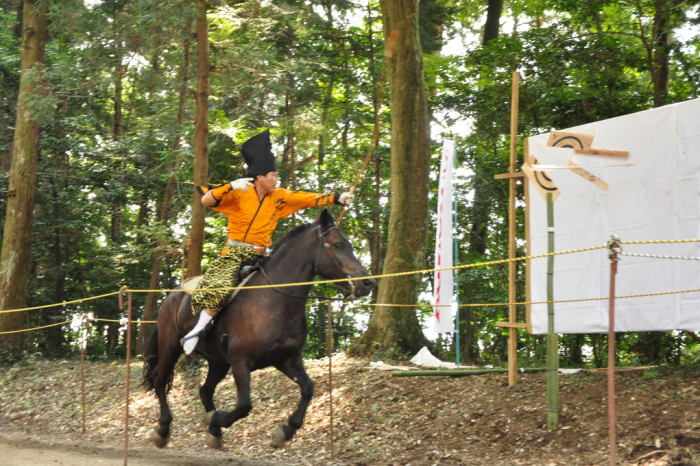Fairfield by Marriott Tochigi Motegi
Stay & Relax
We use cookies on this site to enhance your user experience. If you continue to browse, you accept the use of cookies on our site. See our cookis policy for more information.

Hachimangu Shrine and the Samurai’s Origin
Nakamura Hachimangu Shrine is one of the eight shrines enshrining the god Hachiman in the Northern Kanto region. It is said that the Hachiman is is the guardian deity of the Minamoto clan warriors, so a legendary samurai called Minamoto no Yoshiie, the common ancestor of the shoguns of Minamoto no Yoritomo and Ashikaga Takauji, came here to pray for his victory.
After the establishment of the Kamakura Shogunate by Yoritomo, he attacked the Fujiwara clan of Oshu, which was then in northeastern Japan. Nakamura Munemura, the lord of the Nakamura County, fallowed Yoritomo’s army, was rewarded to be the lord of the Date County of Oshu. Munemura has been seen as the ancestor of Date Masamune.
The birth of Yabusame ceremony
In 1736, Date Yoshimura, the 5th Daimyo of Sendai Domain, just ended his “Sankin-kotai (alternate attendance)” and prepared to go back to his domin. Before he arrived in Sendai, Yoshimura came here and donated his horse to the god. In order to commemorate this event, the Yabusame Ceremony is held every year at the Annual Grand Festival.
Archers dress in samurai’s hunting attire and ride on horseback, then shot at the target on the left on their horses. The whole ceremony is accompained by the thumping sound of taiko, which makes the ceremony very energetic.
| Address | 〒321-4351 560 Naka, Moka City, Tochigi |
|---|---|
| Telephone Number | 0285-82-3085 |
| Website | http://www.moka-kankou.org/ |
| Date | 2024 September 15 (Sun.) |
| Time | ■Fresh Ginger Market 9:00~ ■Jimba (horses) Approach March 10:00~ ■Annual Grand Festival Ceremony 11:00~ ■Yabusame 12:00~ ■Taijin-raku 13:00~ ■Mikoshi Togyo・Hayashi 13:30~ |
| DIRECTIONS | A 15-minutes walk from Moka Railway Terauchi Station. ※Shuttle bus between the shrine and Moka Station or Terauchi Station available during the festival. |
| Map Code | 74 594 235*23 |
The eastern area is famous for its abundant flowers and traditional Mashiko pottery. Seasonal charms welcome tourists throughout the year with flowers such as cherry blossoms and wisterias in spring and some of the nation’s most beautiful autumn foliage.